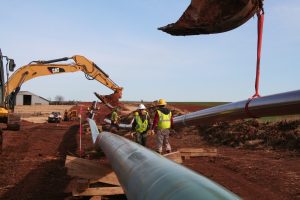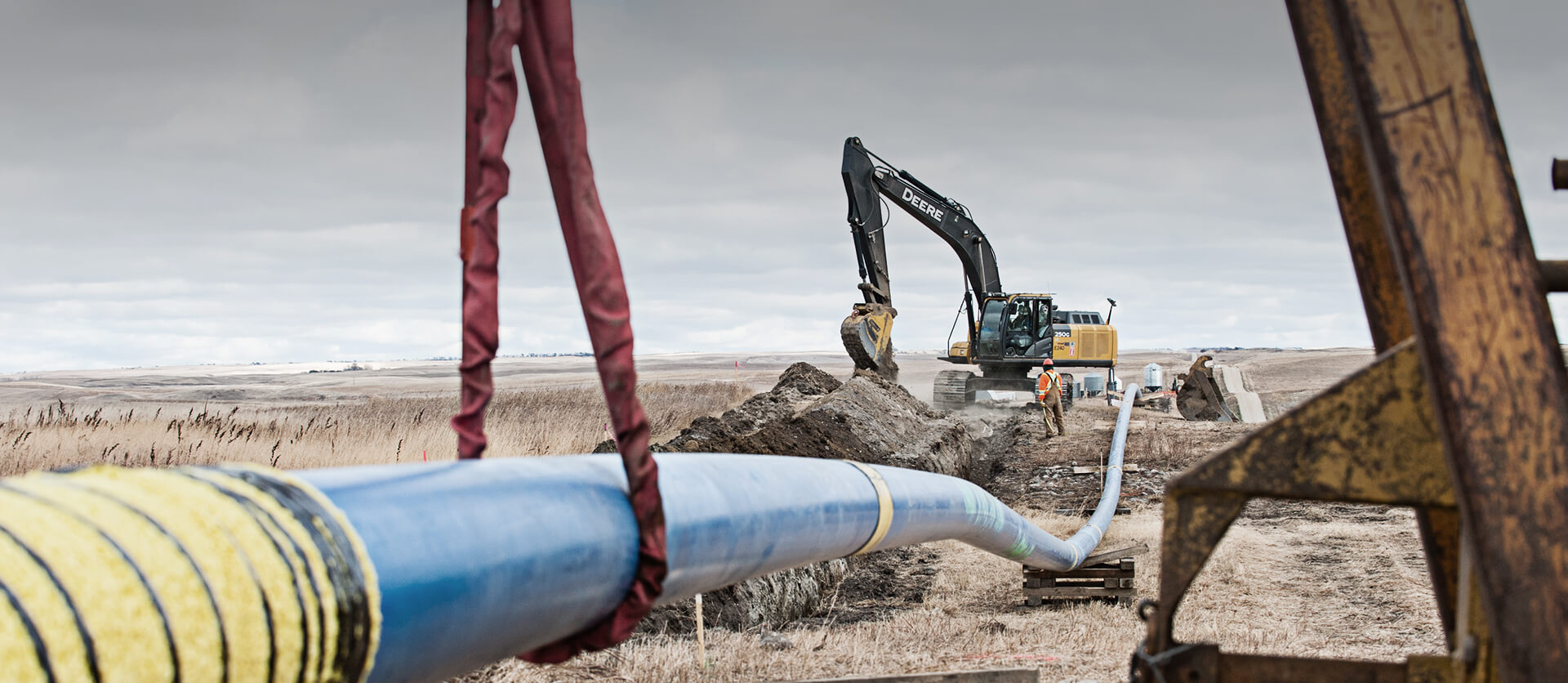What Does Permian Basin Pipeline Construction Mean?
Wiki Article
The smart Trick of Permian Basin Pipeline Construction That Nobody is Talking About
Table of ContentsPermian Basin Pipeline Construction - An OverviewSome Known Facts About Permian Basin Pipeline Construction.The 5-Minute Rule for Permian Basin Pipeline ConstructionMore About Permian Basin Pipeline ConstructionPermian Basin Pipeline Construction for DummiesThe Buzz on Permian Basin Pipeline ConstructionNot known Incorrect Statements About Permian Basin Pipeline Construction
Cured-in-place pipe (CIPP) is a trenchless innovation utilized to install water, sewage system, and other pipelines without needing major excavation or intrusive excavating. The procedure starts by putting a lining into the existing pipework, which is then filled with resin that sets to develop an irreversible pipe within the existing pipeline.At MaxLiner U.S.A., we comprehend the benefits of making use of CIPP, that include its cost, rate, and marginal disruption throughout installment. This makes it a perfect choice for service providers, plumbing professionals, organizations, and communities seeking to minimize downtime while installing new pipes. One of the primary benefits of CIPP is its expense savings on labor and equipment, resulting in a more economical option than traditional pipeline substitute techniques.

Rather, a lining is put right into the damaged pipeline and healed in place with heat, producing a seamless repair work that offers long-term protection against origin infiltration, corrosion, opening damages, and other common concerns with existing pipes. Not just does this strategy remove the demand for comprehensive excavating, however it additionally removes the possible threats connected with hazardous waste elimination.
Little Known Facts About Permian Basin Pipeline Construction.
Costs often tend to be reduced than changing whole sizes of piping through open-cut installations also when factoring in the cost of liner materials. As a result of its low ecological influence and expense savings possible, cured-in-place pipe installation is coming to be progressively popular as an alternative to traditional fixing job in various markets.When it comes to cured-in-place pipeline (CIPP) installation, several benefits originate from its very little time and price. CIPP installments can be established up in a portion of the time it would take for conventional pipeline substitute because no excavation is called for. As opposed to excavating right into the surrounding dirt and getting rid of existing pipelines, CIPP utilizes cutting edge trenchless modern technology to mount resin linings or polyester fiber tubes inside existing pipelines
The smart Trick of Permian Basin Pipeline Construction That Nobody is Talking About
This helps to minimize downtime and maintain your task on course, causing time cost savings that would certainly not have been feasible with conventional pipe replacement systems. Whether eliminating smaller sized sections of piping or doing total relining jobs, this method has specific benefits when it comes to expense. Not just is devices rental gotten rid of considering that no excavation is required, but so are site remediation expenses because a minimal surface repair might be required after installment.Therefore, with marginal time and expense required for installation, cured-in-place pipe installation is a terrific alternative for reducing labor prices without compromising top quality job. As we'll talk about in the following area, this type of setup provides massive benefits when it involves decreasing disruption around homes and companies.
Permian Basin Pipeline Construction Fundamentals Explained
This trenchless setup is a lot easier to carry out than traditional pipeline laying. As the name implies, many excavation and relevant site prep work is stayed clear of since the new pipes are fed with existing conduits. This makes it feasible to install below ground pipes in a portion of the time needed for the more standard excavating technique, which can develop unnecessary disruption to the setting, neighborhood roads, paths, surrounding homeowner, and so on.In some cases, it could take a little bit of excavating if these gain access to check it out points are not already installed in existing maintenance openings or catch containers. The result needs to still be less disruptive than digging deep into lengthy trenches, yet something to think about prior to committing to this setup (Permian Basin Pipeline Construction). On the whole, cured-in-place pipeline installation is sensible when minimal disruption is desired given that a lot of the below ground facilities remains intact while giving renewed stamina and dependability to existing pipes


The cured-in-place installation process begins with checking the pipe concerned to identify whether any damage exists or needs replacement. Later, if required, cleaning needs to occur inside the pipe to ensure that all product buildup is removed and all surfaces are smooth and unpolluted before lining installment. Once these steps are finished, a special resin-coated felt or hybrid really felt and fiberglass material is put into the pipe and uniformly dispersed along its length.
The smart Trick of Permian Basin Pipeline Construction That Nobody is Discussing
Healing (either ambient, heated water or air, or UV) is presented into the tube when the lining installment is total, healing and forming the resin material around the old pipe's shape. It ought to be kept in mind that excessive stress should be avoided at all costs due to the fact that it can trigger more damage to the system.This thorough section regarding the 'Cured-In-Place Installment Process' has explained its detailed treatment. By comprehending what enters into this procedure and its see page troubles, we can appreciate exactly how useful it can be for numerous piping fixings - Permian Basin Pipeline Construction. Now allow us go on to discover what types of materials are utilized in this procedure in our following area
Not known Facts About Permian Basin Pipeline Construction
The appropriate material can substantially influence the work, including cost-effectiveness, resilience, efficiency, and performance. Polymer liners are typically favored for CIPP because they are highly resilient and immune to rust and wear and tear. They can additionally last anywhere from 10 to 30 years, relying on the quality of the materials used.It is usually much easier, much less turbulent, and a lot more cost-efficient than standard repair services. One of the main benefits of CIPP pipe installment compared to the traditional strategy of removing and replacing any type of broken pipe sections with brand-new product is that CIPP pipeline does not need excavating or digging deep into the bordering my blog areas.
This minimizes the moment and labor required for complex remediation jobs. Finally, CIPP materials are thinner than sections of the new pipeline, so they need extremely little room while supplying premium durability and sturdiness compared to other methods of fixing broken pipelines. While CIPP installment uses some distinct advantages over typical methods of fixing pipes, it can have specific constraints depending upon which sort of specific circumstance requires it.
Permian Basin Pipeline Construction for Beginners
Generally, CIPP pipe installation presents a number of benefits when it concerns conserving time, money, and effort throughout pipe fixing projects. These advantages make it an appealing alternative for those trying to find quickly yet reliable methods to address broken pipes in your home or in company settings. In the adhering to section, we will discuss an introduction of cured-in-place pipe installment in better information to provide you an also better understanding of its lots of benefits.Report this wiki page